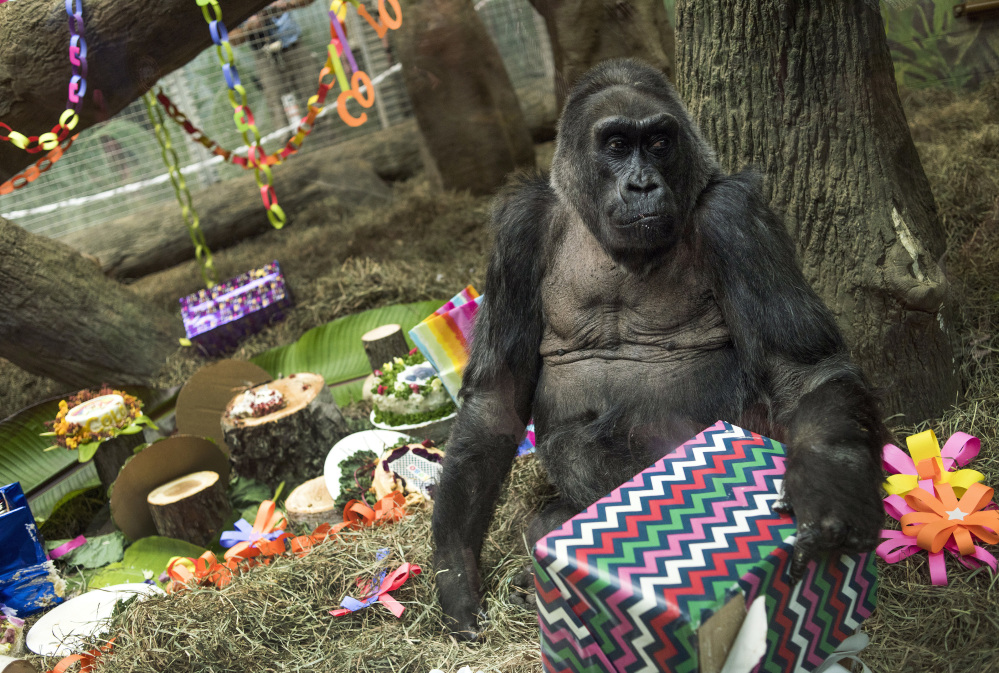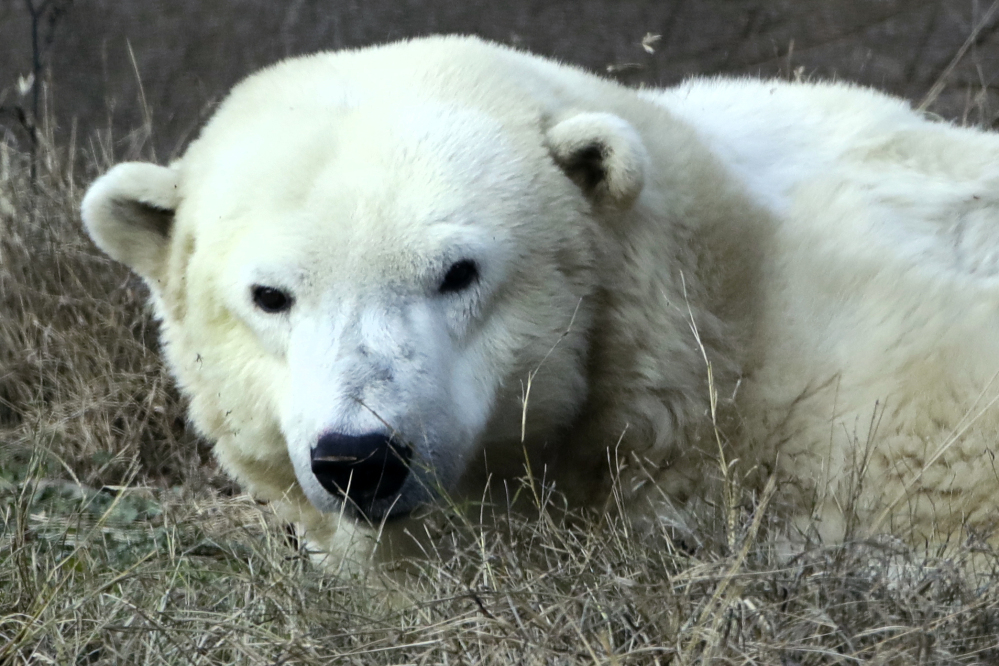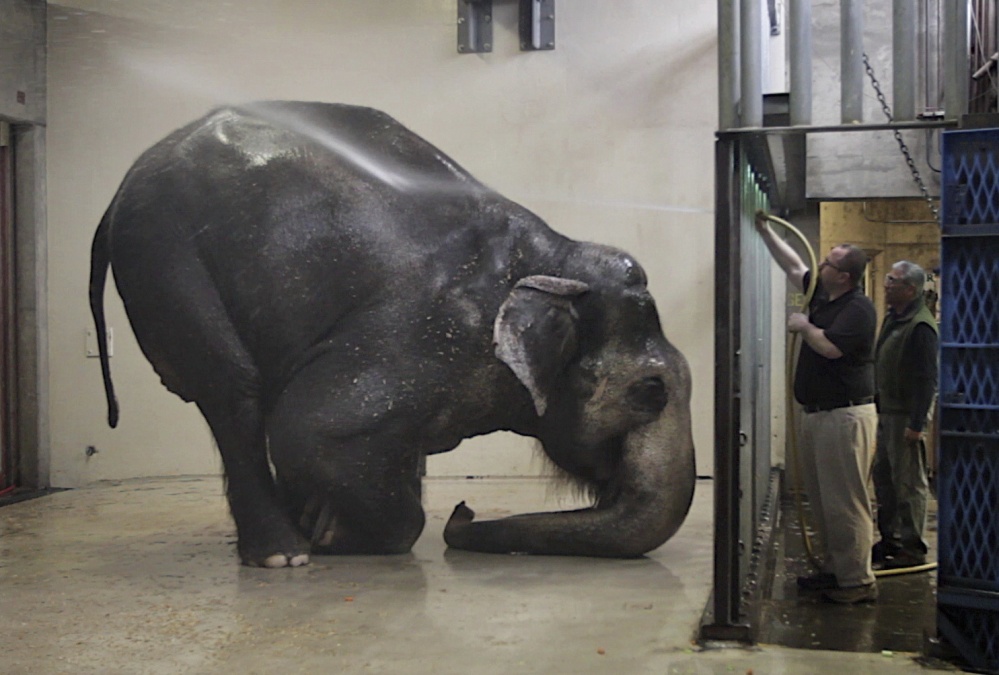COLUMBUS, Ohio — She is a mother of three, grandmother of 16, great-grandmother of 12 and great-great-grandmother of three. She recently had surgery to remove a malignant tumor, but doctors say she’s doing well.
She’s Colo, the nation’s oldest living gorilla, and she turned 60 on Thursday at the Columbus Zoo and Aquarium.
Colo was the first gorilla in the world born in a zoo and has surpassed the usual life expectancy of captive gorillas by two decades. Her longevity is putting a spotlight on the medical care, nutrition and up-to-date therapeutic techniques that are helping lengthen zoo animals’ lives.
“Colo just epitomizes the advances that zoos have made, going all the way back to her birth at Columbus,” said Dr. Tom Meehan, vice president for veterinary services at Chicago’s Brookfield Zoo and veterinary adviser to a national gorilla species survival plan.
The changes also mean more animals living with the normal aches and pains of growing older. Today, zoo veterinarians regularly treat animals for heart and kidney disease, arthritis, dental problems and cancer.
Hundreds of people gathered at the zoo Thursday to see Colo, singing “Happy Birthday” moments before the gorilla ambled into an enclosure decorated with multicolored construction paper chains and filled with cakes such as squash and beet and cornbread with mashed potato parsley frosting.
Among the first in line was Pam Schlereth of Columbus, who at 63 was just a little girl when her father brought her to see the newborn Colo in a gorilla incubator in 1956.
“It’s a tribute to the zoo that she’s alive at 60 years old,” Schlereth said.
Colo represents so much to the zoo, Tom Stalf, president of the zoo, told the crowd. “It’s all about connecting people and wildlife,” he said.
Colo is one of several elderly gorillas around the country. The oldest known living male gorilla, Ozzie, is 55 years old and lives at the Atlanta Zoo, which has a geriatric gorilla specialty.
At Seattle’s Woodland Park Zoo, staff members use acupuncture, massage, laser therapy, and heat and joint supplements to help Emma, a 13-year-old rabbit.
At the National Zoo in Washington, Shanthi, a 42-year-old Asian elephant with arthritis, receives osteoarthritis therapy and was recently fitted with specially crafted front foot boots to help her feet heal as medications are applied.
In Oakland, California, Tiki, a 27-year-old giraffe and one of the oldest in the nation, gets foot care, massage therapy, acupuncture and chiropractic care, along with traditional veterinary medicine. Gao Gao, a 26-year-old male panda at the San Diego Zoo with a heart condition, periodically undergoes cardiac ultrasounds.
“Geriatrics is probably one of our most common medical challenges that we face in a zoo situation,” said Dr. Keith Hinshaw, director of animal health at the Philadelphia Zoo. “So pretty much anything that you could imagine would happen with an older person is going to happen eventually with any animal.”
That’s up to and including medication: JJ, a 45-year-old orangutan at the Toledo Zoo, is on the human heart medicines and also takes Metamucil.
Send questions/comments to the editors.





Success. Please wait for the page to reload. If the page does not reload within 5 seconds, please refresh the page.
Enter your email and password to access comments.
Hi, to comment on stories you must . This profile is in addition to your subscription and website login.
Already have a commenting profile? .
Invalid username/password.
Please check your email to confirm and complete your registration.
Only subscribers are eligible to post comments. Please subscribe or login first for digital access. Here’s why.
Use the form below to reset your password. When you've submitted your account email, we will send an email with a reset code.